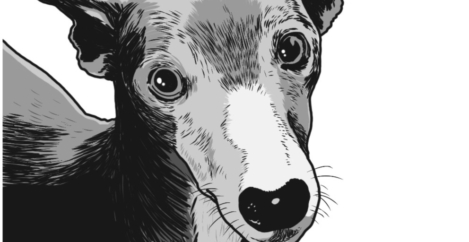November 29, 2023
People are more likely to accept advice from an AI animal, if the idea fits the species
 People are more accepting of advice from an AI in animal form if the idea seems to them to fit the species, such as running advice from a whippet, according to new research from UCD Michael Smurfit Graduate Business School (UCD Smurfit School), HEC Montréal, and Nottingham University Business School China (NUBS China). Consumers are then more likely to engage with the animal AI than humanoid AI if the activity, experience, or product is designed to be fun. The findings were first published in the journal Psychology & Marketing.
People are more accepting of advice from an AI in animal form if the idea seems to them to fit the species, such as running advice from a whippet, according to new research from UCD Michael Smurfit Graduate Business School (UCD Smurfit School), HEC Montréal, and Nottingham University Business School China (NUBS China). Consumers are then more likely to engage with the animal AI than humanoid AI if the activity, experience, or product is designed to be fun. The findings were first published in the journal Psychology & Marketing.
AI?powered services are increasingly adopting animal representations, referred to as zoonotic design. Examples include Otter.ai (otter) and GoCharlie.ai (dog), which perform tasks traditionally completed by humans, such as transcribing meeting notes and providing customer service.
To understand the effects of zoonotic AI on consumer adoption, Dr. Anshu Suri, UCD Garfield Weston Assistant Professor of Marketing at UCD Smurfit School, and colleagues from HEC Montréal and NUBS China conducted a series of seven studies. These studies involved assessing responses to an AI bear copywriting assistant, an AI tiger fitness assistant, an AI parrot, and more.
Results from the first three studies suggest consumers are less likely to choose an AI over a human provider when the AI is represented by an animal compared to a humanoid robot. A follow-up study demonstrates this is due to the difficulty in trying to associate the animal with the task, e.g., it’s difficult to imagine a bear supporting copywriting.
This was evident in their subsequent study which showed that zoonotic AI was easier to accept when characteristics of the animal aligned with the task, such as a cheetah giving running advice. In their final study, consumers were actually found to be more accepting of animal AI than humanoid AI if the task is perceived to be fun and enjoyable.
Dr. Suri says, “Given the substantial investments brands make in developing and marketing AI?based services, our research advises caution in representing such services with zoonotic AI. When designing zoonotic AI, managers should carefully consider matching the species with the nature of the service being offered. Managers can also promote the adoption of zoonotic AI by emphasising the entertaining aspects of the AI’s task process.”
These findings advance the understanding of consumer–AI interactions in the context of zoonotic designs and provide valuable managerial insights into when and how firms should use animal representation for AI?powered services.














